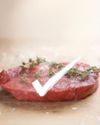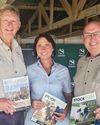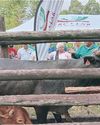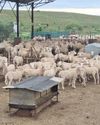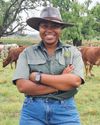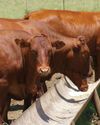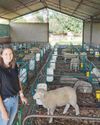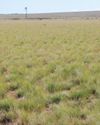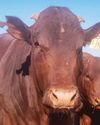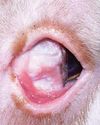Stockfarm Magazine - December 2025

Holiday Sale
1767430799
Go Unlimited with Magzter GOLD
Read Stockfarm along with 10,000+ other magazines & newspapers with just one subscription
View CatalogSubscribe only to Stockfarm
Cancel Anytime.
(No Commitments) ⓘIf you are not happy with the subscription, you can email us at help@magzter.com within 7 days of subscription start date for a full refund. No questions asked - Promise! (Note: Not applicable for single issue purchases)
Digital Subscription
Instant Access ⓘSubscribe now to instantly start reading on the Magzter website, iOS, Android, and Amazon apps.
Verified Secure
payment ⓘMagzter is a verified Stripe merchant.
In this issue
Vertical gains in the lambing pen Fragility of the red meat sector 2025 ARC Beef Performers Awards LRF Stockman School • Komga Show • Kei Road farmers celebrate 150 years Precision nutrition • Phase C and D growth tests • Maize silage • Lucerne hay Heat stress • Flies • Wireworm
Stockfarm Magazine Description:
The magazine for livestock farmers
Recent issues

November 2025

October 2025

September 2025

August 2025

July 2025

June 2025

May 2025

April 2025

March 2025

February 2025

January 2025

Desember 2024

November 2024

October 2024

September 2024

August 2024

July 2024

June 2024

May 2024

April 2024

March 2024

February 2024

January 2024

December 2023

November 2023

October 2023

September 2023

August 2023

July 2023
Related Titles

Forbes Africa

Fast Company South Africa

Farmer's Weekly

Personal Finance

Skyways

Global Aviator

South African Business Integrator (SABI)

Walls and Roofs in Africa

To Build

Floors in Africa

SA Building Review

Ignited Woman

JSE - Johannesburg Stock Exchange Magazine

The Entrepreneur

Successful Man

African Decisions

Tax Breaks

Ultimate Defence

Top Women in Business & Government

Top500

Top 300 Western Cape

Progressive Women in Business

Auditing SA

Future SA

Top Women Leaders

Mark Magazine

Top Empowerment Companies

Best of South Africa

Best of Rwanda

Best of Soweto


